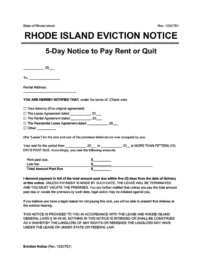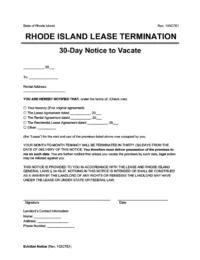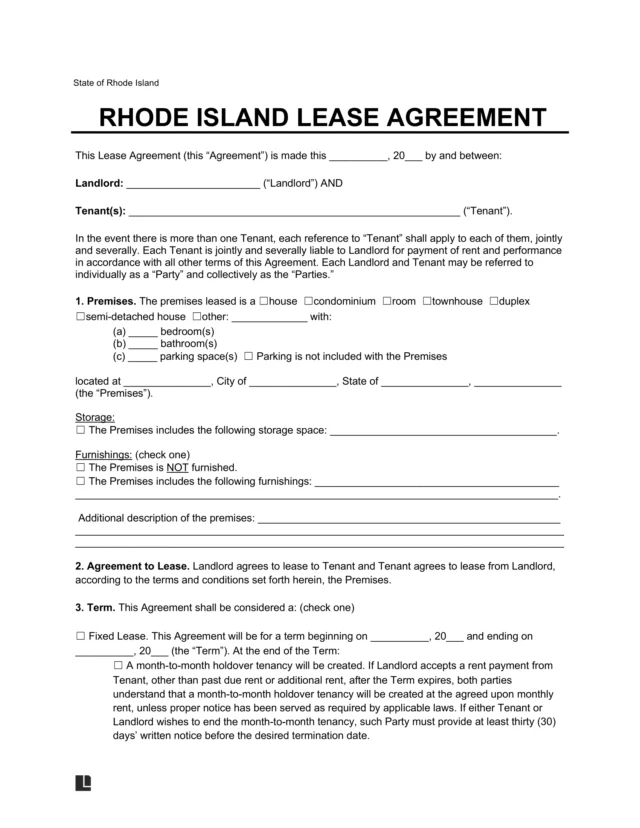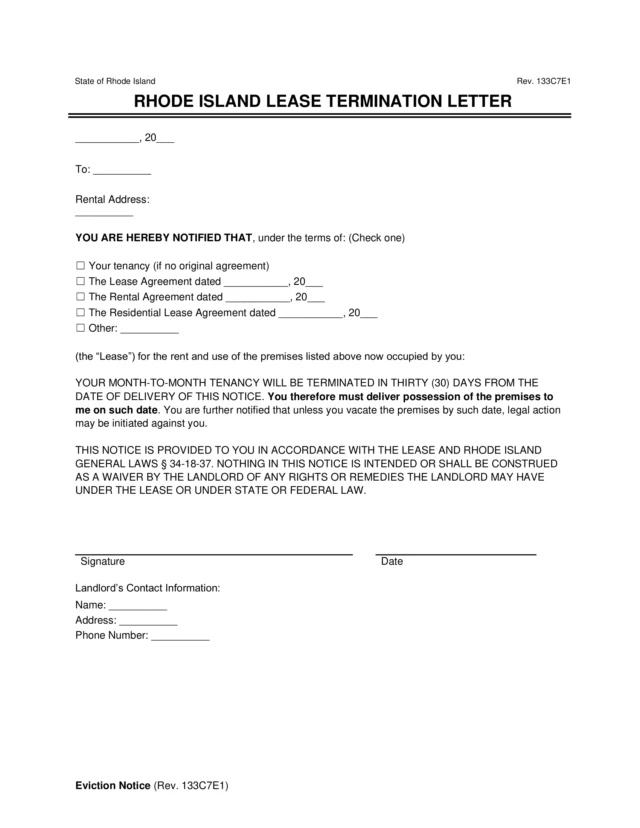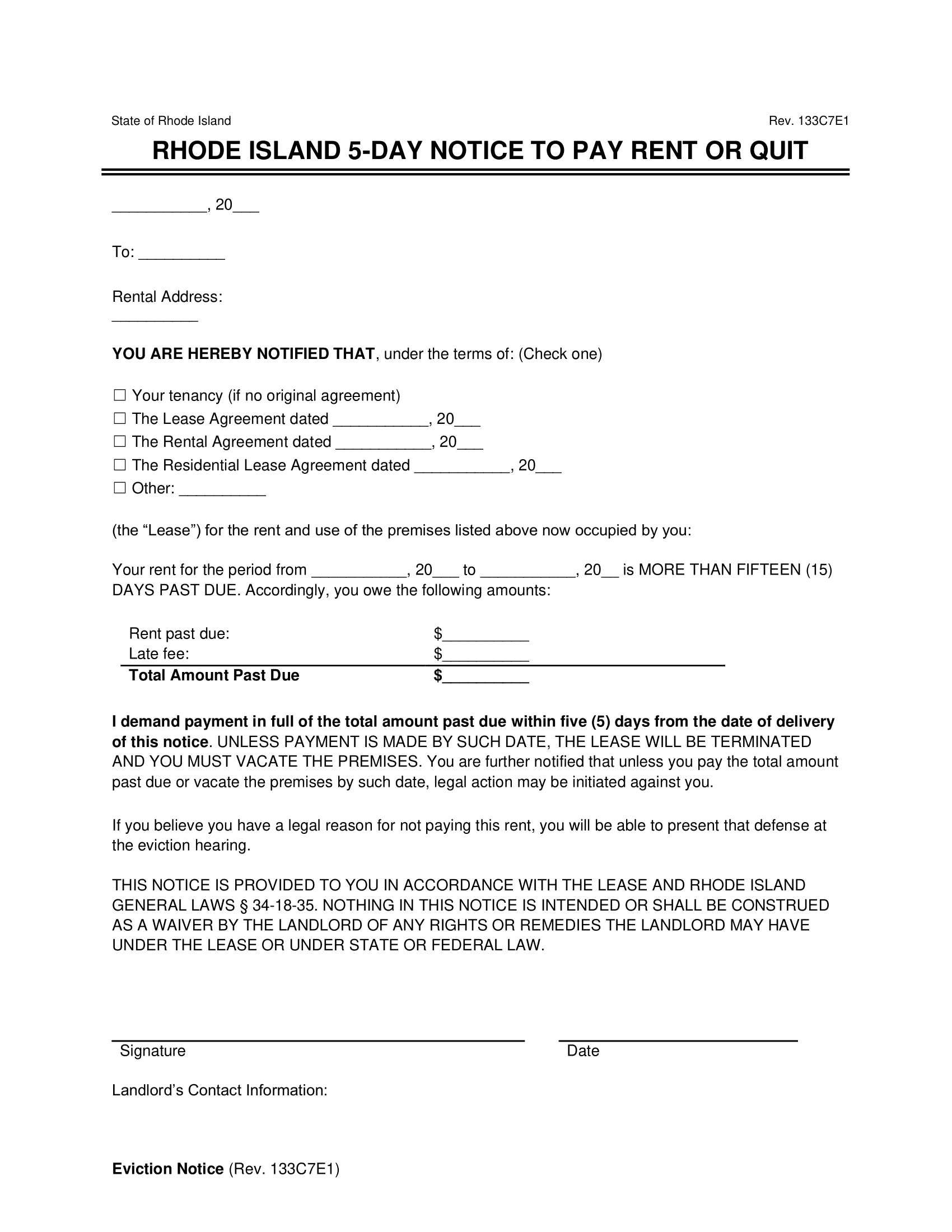Understanding Eviction Notices in Rhode Island
In Rhode Island, a landlord must first serve the tenant with a written eviction notice that reflects the issue before going to court. The proper amount of notice issued will depend on whether the eviction reason is for late rent, lease infractions, or ending the lease.
Create your Rhode Island eviction notice step-by-step using our document editor. Then, download it as a PDF or Word file and deliver it to your tenant.
Types of Eviction Notices in Rhode Island
Rhode Island mandates different eviction notice procedures depending on whether the eviction is fault-based or the end of a periodic tenancy.
5-Day Notice to Pay Rent or Quit
Per RI Gen. Laws § 34-18-35 and § 34-18-56(a), you can serve a 5-day demand notice when a tenant’s rent is overdue by more than 15 days. After the 15-day grace period, the tenant will still have five days to pay overdue rent and any late fees in the lease.
5-Day Notice to Pay Rent or Quit
Give a tenant five days to pay overdue rent or leave the property.
20-Day Notice to Quit for Non-Compliance
If the tenant breaks a lease term, you must give them a 20-day notice to quit per RI Gen. Laws § 34-18-36. They can correct the breach or move out to comply with the notice.
20-Day Notice to Quit for Non-Compliance
Allow tenants 20 days to fix a lease violation or quit for not complying.
30-Day Notice Lease Termination
You can ask a tenant to move out via a 30-day notice per RI Gen. Laws § 34-18-37(b) and § 34-18-56(c). When you signal your intent to end a month-to-month tenancy, the tenant must respect the notice and leave the property within 30 days. If they don’t quit the property within the notice period, you can pursue an eviction lawsuit and obtain a court order demanding that the tenant leave.
30-Day Notice Lease Termination
Let a tenant know that you’re ending a month-to-month lease agreement.
How to Evict a Tenant in Rhode Island
The eviction lawsuit process is outlined in Title 34, Chapter 19 of the Rhode Island General Laws.
Step 1 – Send an Eviction Notice
In the case of non-payment of rent, a 15-day grace period must pass before the landlord can send a notice. No grace period is necessary in cases where tenants don’t comply with lease terms.
Please note that before proceeding with a formal court eviction, the landlord must issue proper notice. Landlords may deliver notice via first-class mail, registered or certified mail, personal service, or process server.
Step 2 – File a Summons and Complaint
After the applicable notice period, the landlord files a complaint with the local District Court Clerk’s office. The summons include the district court location, date, and time.
Step 3 – Serve the Tenant
The court has the complaint served on the tenant with a summons to appear. The summons will detail the time, date, and location at which the tenant must respond. The tenant should receive the summons at least five days prior to a court hearing.
Step 4 – Let the Tenant Respond
The tenant must file an answer to the summons and complaint. If the tenant fails to provide a written response, the court will likely enter a default judgment in favor of the landlord.
If the tenant paid or attempted to pay the rent in full, the eviction cannot proceed. In cases where the eviction is brought about due to a breach in the lease, the tenant cannot be evicted if they’ve remedied the issue within 20 days.
Step 5 – Attend the Court Hearing and Receive Judgment
If the landlord receives a court order for eviction, the tenant has five days to appeal or vacate the premises.
After the tenant files the appeal, the district court will send the case to the superior court. The superior court will schedule a new court date.
Step 6 – Obtain Writ of Execution
A writ of execution gives the tenant a specific date to remove their belongings and leave the property. The writ is also given to the Sheriff’s Department, which will forcibly remove the tenant if necessary.

